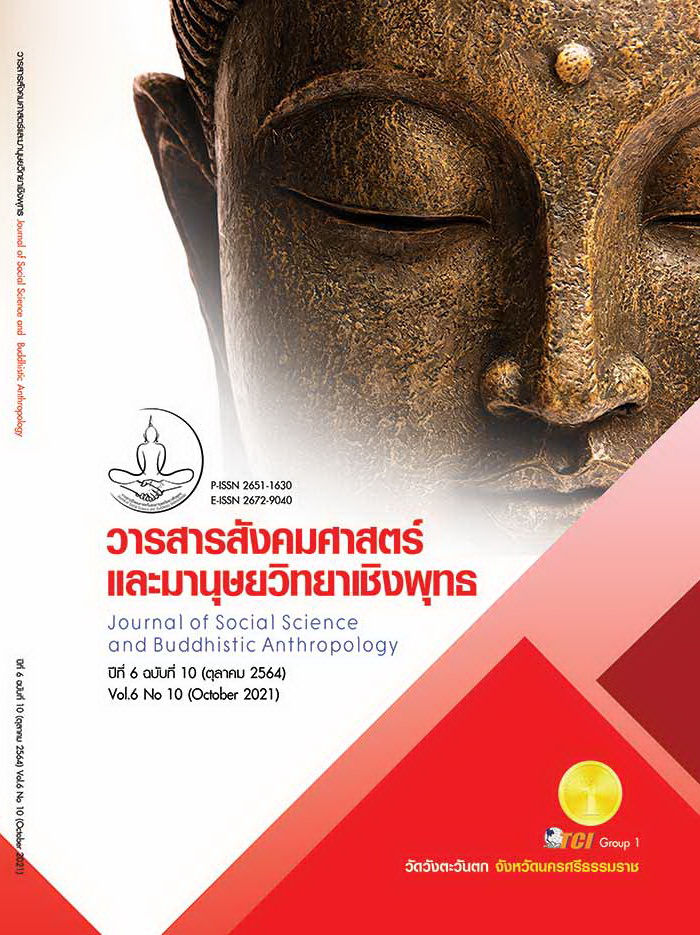EARTH - HOUSE: HISTORY AND APPLICATION OF WISDOM FOR THE DEVELOPMENT OF HOMES IN THE NORTHEAST THAILAND
Keywords:
Earth - House, History, Applied WisdomAbstract
The objective this research article was to 1) study the history, current conditions of the earth house in the Northeast. And 2) to apply the wisdom of building an earthen house in housing design in the Northeast region. This research is a qualitative research. With the sample groups divided by geographic groups as follows North Isan, Central Isan, Southern Isan, totaling 6 provinces. The sample group was divided into 3 groups of anthropology: knowledge group, practice group, general informant A total of 81 people used the tools, which were interview forms and questionnaires, which were approved by the advisor. Collect information with the knowledgeable group Workshops with practitioners and general informants Analyze data with content analysis. The research results were found that In the past, buildings were built with soil, such as bamboo barn and plastering with soil mixed with cow dung. Creating a home and a home of ethnic minorities. Until when the Chinese Lao and Vietnamese have immigrated and brought in the of clay house culture as well. causing many soil houses to occur in the Northeast region during the past 70 - 100 years. Current conditions, when the transportation becomes more convenient, doing business in the Northeast region has progressed. Clay houses were replaced by concrete buildings because of the modernity. The remaining houses began to be smashed. Earth houses have problems with moisture and termites. Therefore, there must be an understanding of how to choose a suitable location and design. Therefore, the application by bringing the good properties of the clay houses together with the current architectural design. It can meet the architectural uses and beauty.
References
กรมพัฒนาสังคมและสวัสดิการ. (2564). บริการกรม. เรียกใช้เมื่อ 15 เมษายน 2564 จาก http://61.19.50.68/dsdw/page
ฐิติศักดิ์ เวชกามา. (2554). แนวคิด ทฤษฏี วัฒนธรรม. (พิมพ์ครั้งที่ 2). มหาสารคาม: สำนักพิมพ์แห่งมหาวิทยาลัยมหาสารคาม.
ณภัทร ศรีวัฒนประยูร และคณะ. (2552). การศึกษาและวิเคราะห์พฤติกรรมการถ่ายเทความร้อนผ่านผนังของบ้านดิน. ใน รายงานวิจัย. มหาวิทยาลัยเทคโนโลยีราชมงคลธัญบุรี.
ดนัย นิลสกุล. (2546). การอนุรักษ์ตึกดินในภาคอีสานใต้. ใน วิทยานิพนธ์สถาปัตยกรรมศาสตรมหาบัณฑิต สาขาเทคโนโลยีอาคาร. จุฬาลงกรณ์มหาวิทยาลัย.
ดวงนภา ศิลปะสาย. (2546). บ้านดิน: สถาปัตยกรรมทางเลือก กรณีศึกษา: บ้านศรีฐาน อำเภอป่าติ้ว จังหวัดยโสธร. ใน วิทยานิพนธ์สถาปัตยกรรมศาสตรมหาบัณฑิต สาขาวิชาสถาปัตยกรรม. มหาวิทยาลัยศิลปากร.
ทรงคุณ จันทจร. (2553). ทฤษฎีวัฒนธรรมและสังคม. มหาสารคาม: สถาบันวิจัยศิลปะและวัฒนธรรมอีสาน.
บุญสม ยอดมาลี และคณะ. (2554). ทฤษฎีวัฒนธรรมและความสัมพันธ์เชิงชาติพันธุ์วรรณนา. มหาสารคาม: สำนักพิมพ์แห่งมหาวิทยาลัยมหาสารคาม.
พรทิพย์ เรืองธรรม. (2560). ทฤษฎีการออกแบบ. (พิมพ์ครั้งที่ 2). มหาสารคาม: สำนักพิมพ์แห่งมหาวิทยาลัยมหาสารคาม.
สิทธิพงษ์ เพิ่มพิทักษ์. (2554). เทคนิควิธีการสร้างบ้านดิน. วารสารวิชาการศิลปะสถาปัตยกรรมศาสตร์ มหาวิทยาลัยนเรศวร, 2(2), 93-101.
Steward, J. (1995). Theory of Culture Change: TheMethodology of Multilinear Evolution. Urbana: University of Illinois Press.








